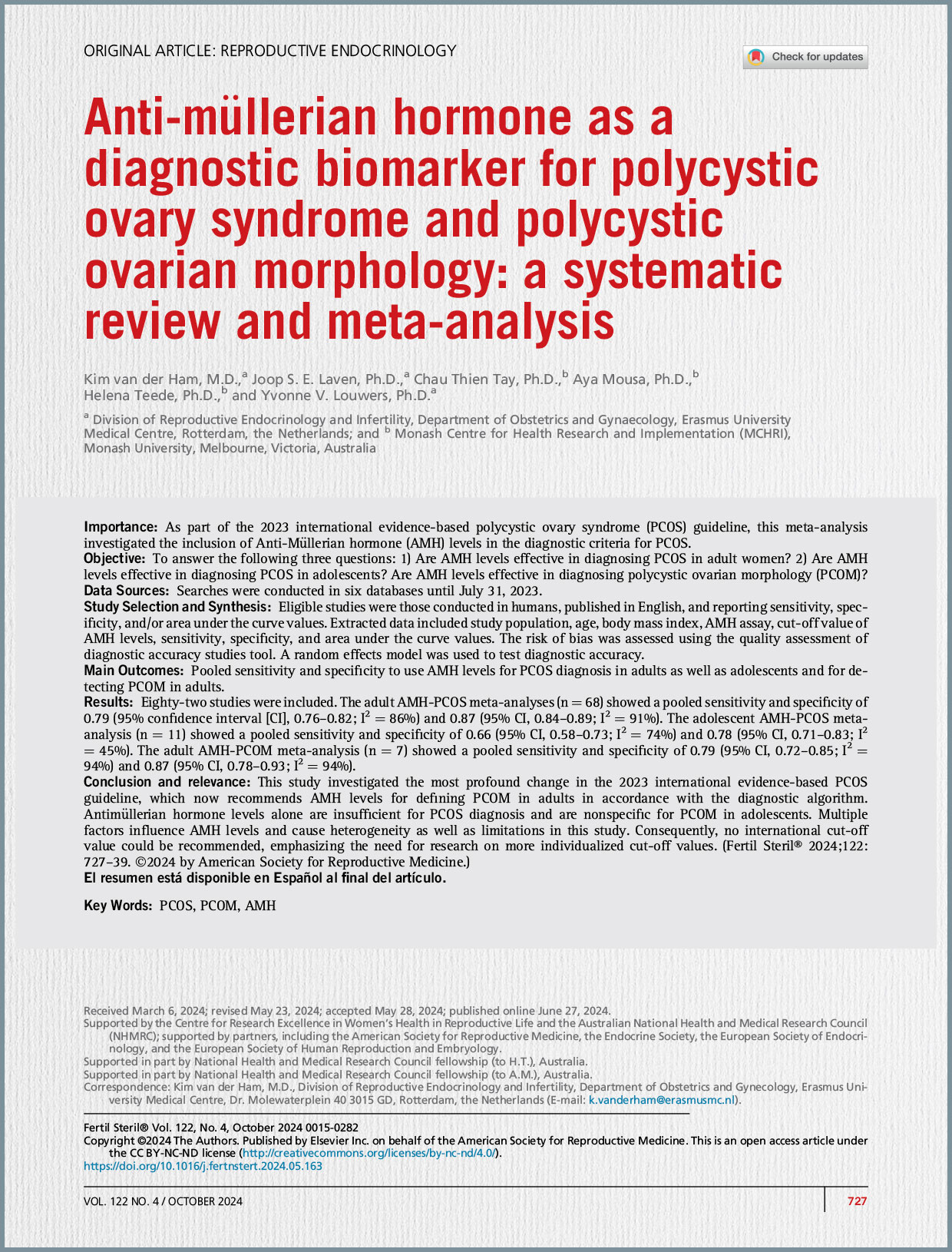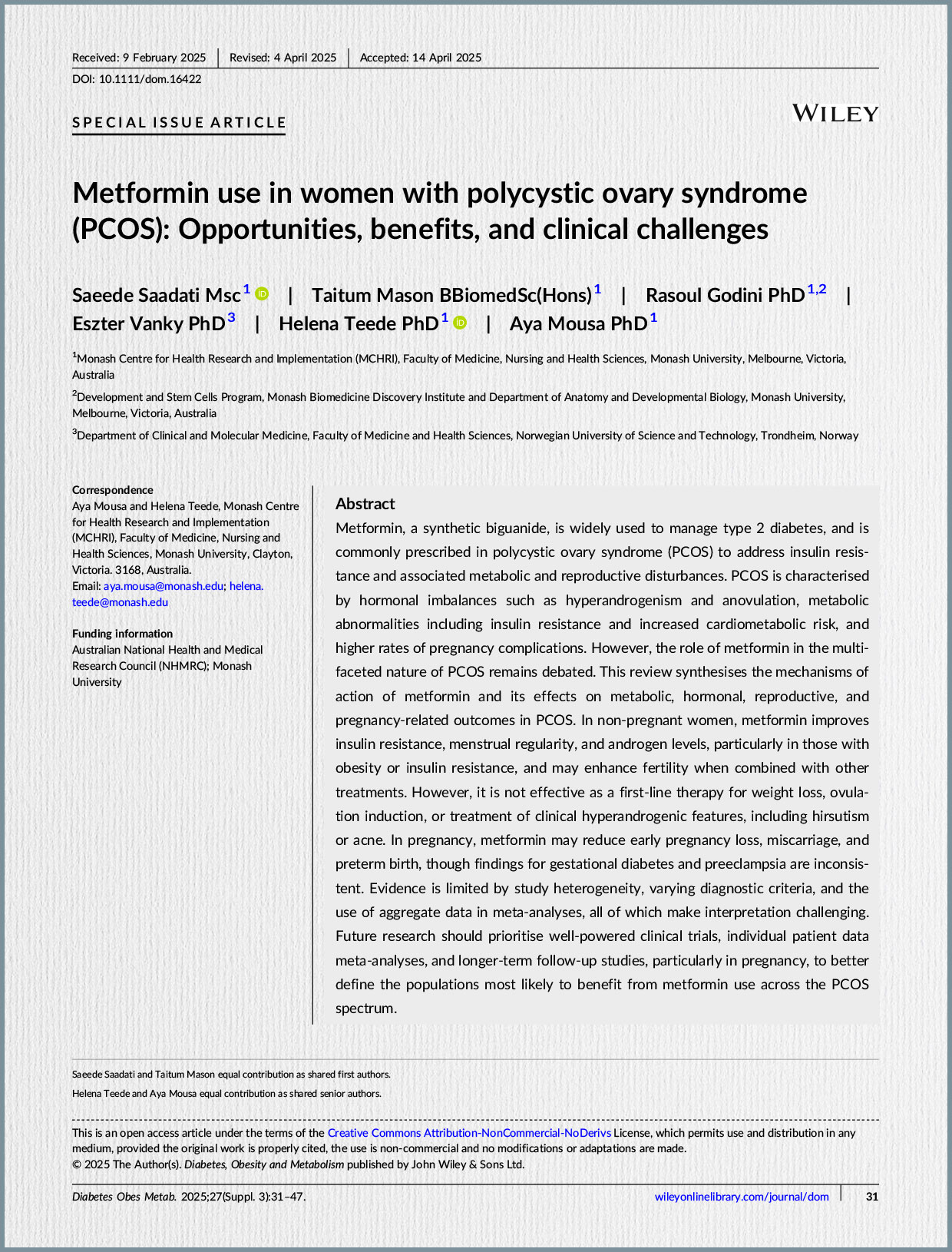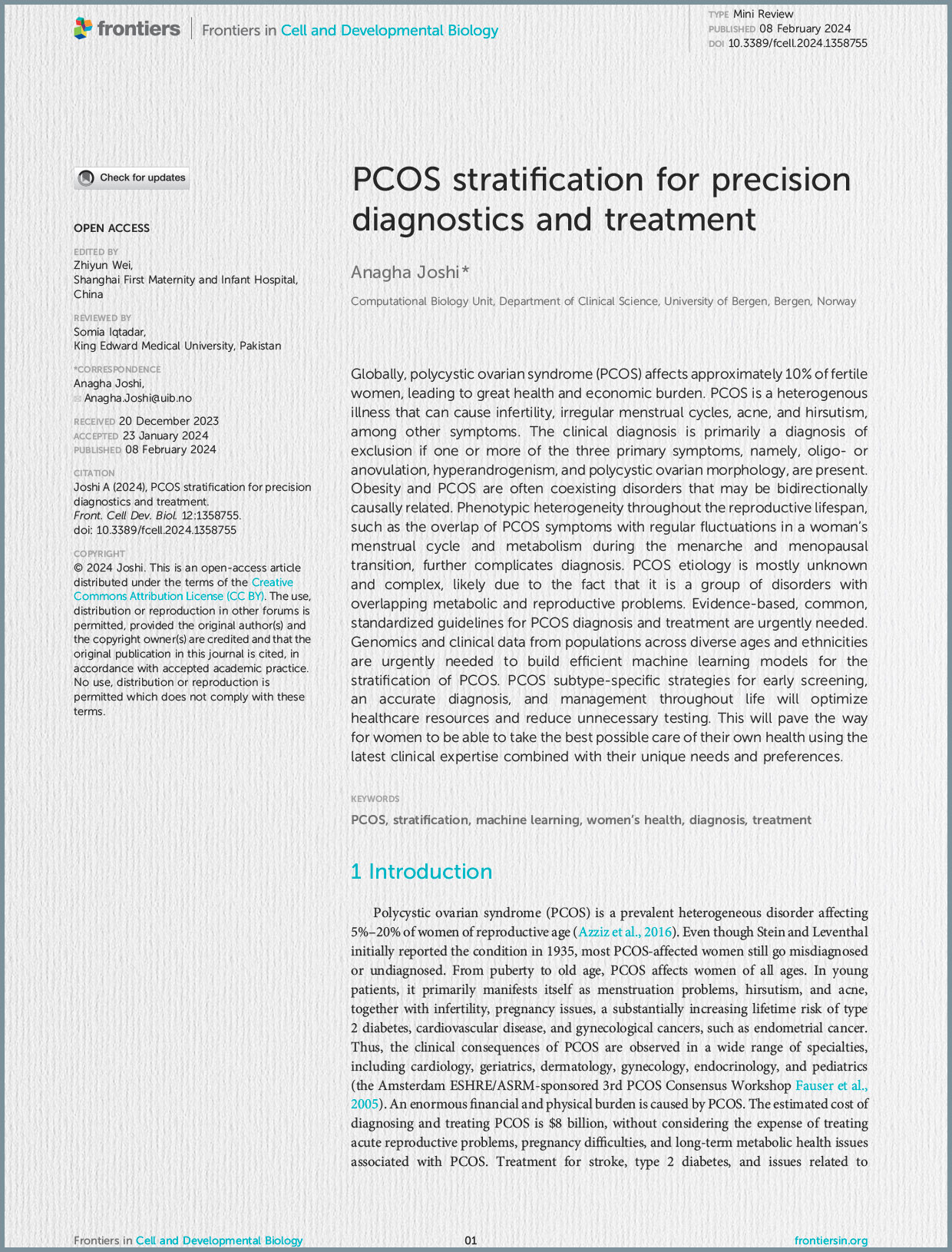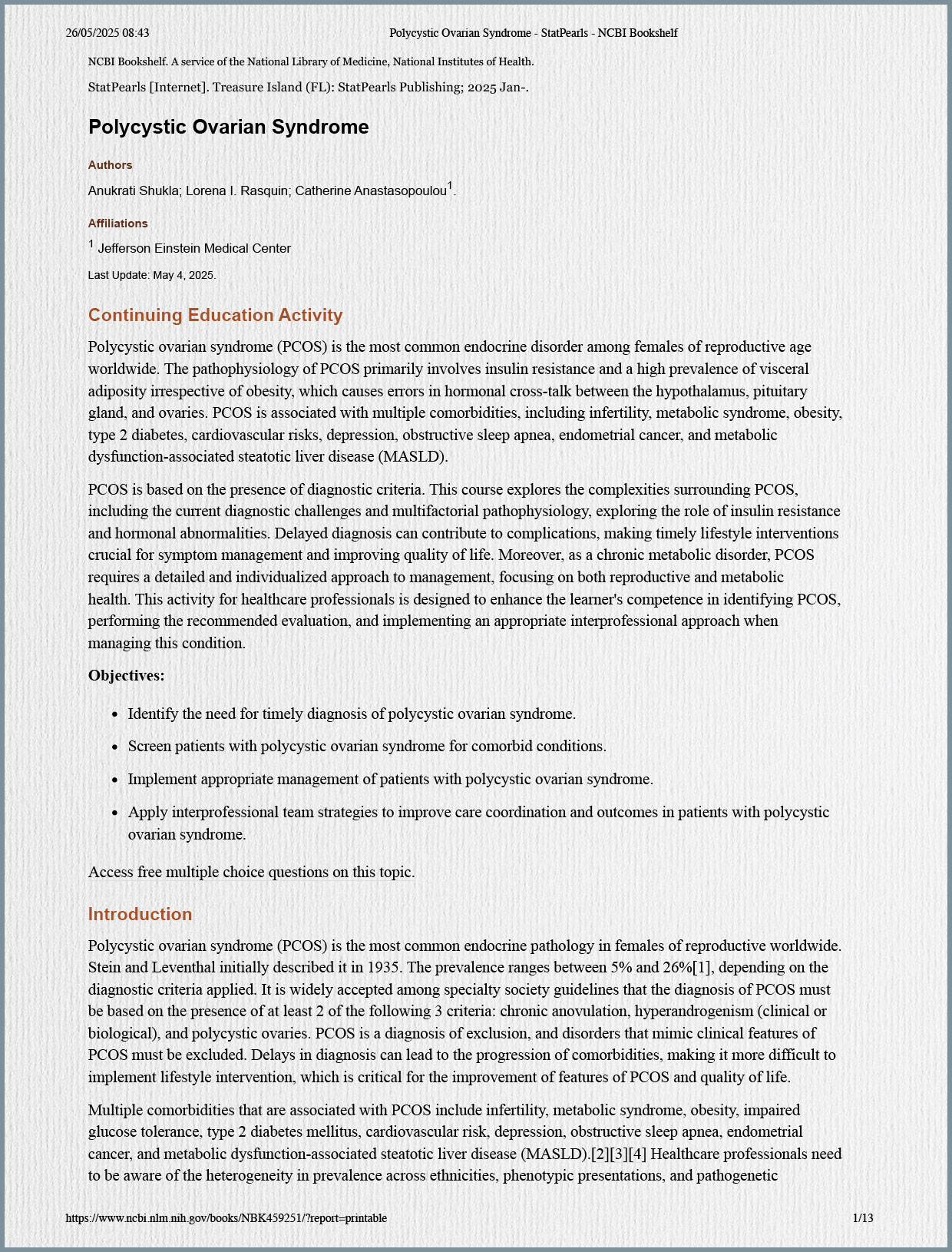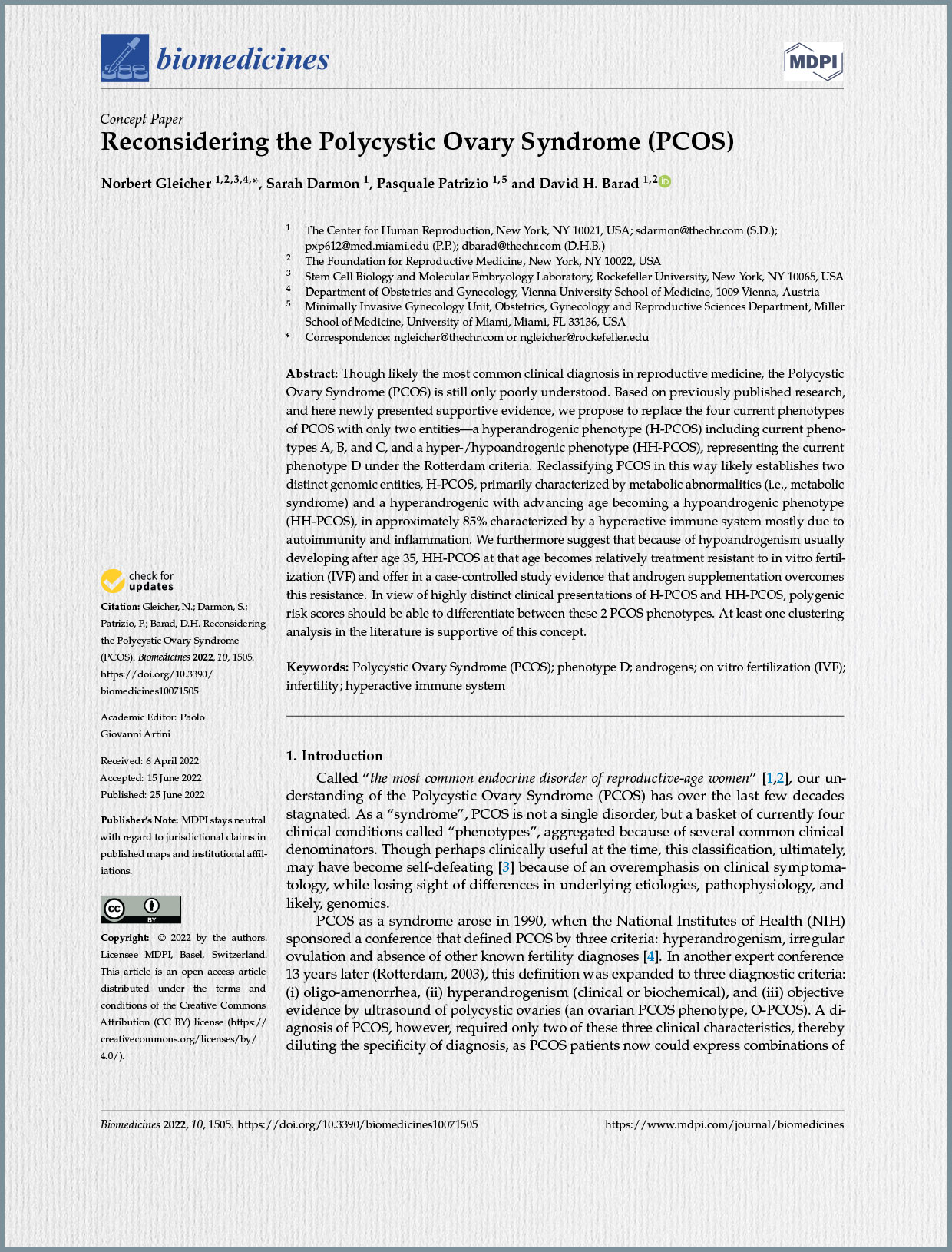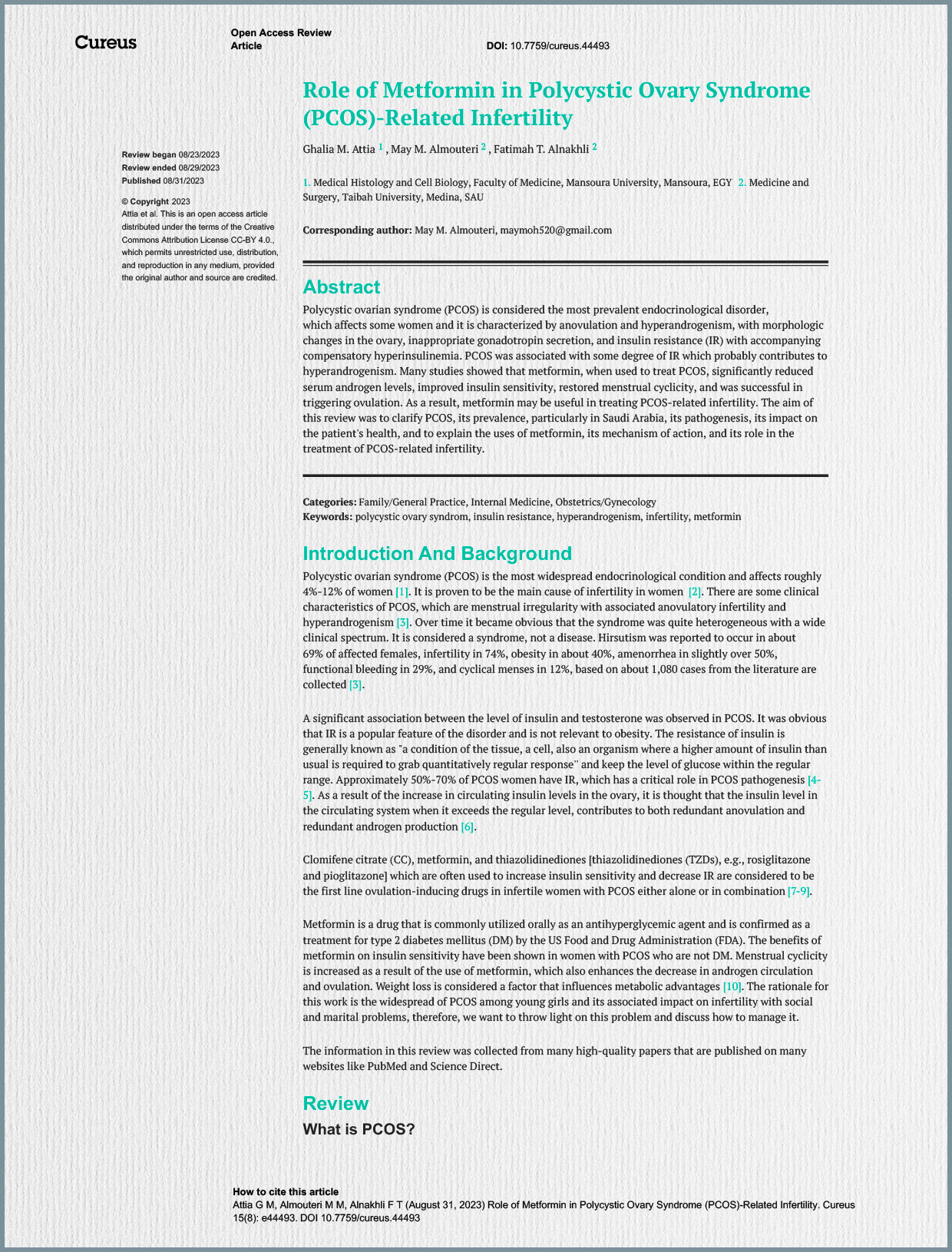Polycystic ovarian syndrome (PCOS) is recognized as a prevalent endocrine and metabolic disorder affecting females of reproductive age. It is characterized by a combination of signs and symptoms, leading it to be considered a heterogeneous disorder. The prevalence of PCOS varies depending on the diagnostic criteria used, with estimates ranging from approximately 6–20% in reproductive-aged women, 5–10%, 4–12%, 6–10%, up to 1 in 10, and 5%-26%. Symptoms often begin early during puberty.
Diagnosis of PCOS
Diagnosing PCOS can be complex due to its diverse presentation and the existence of multiple diagnostic criteria. Historically, Stein and Leventhal first described PCOS as an endocrine disorder linked to oligo-ovulatory infertility in 1935. Over time, different criteria have been developed by major scientific societies and health authorities.
The Rotterdam criteria (2003) are the most extensively used and widely accepted. According to these criteria, a woman can be diagnosed with PCOS if she presents with any two of the following three features, after excluding other related disorders:
- Hyperandrogenism (clinical signs like hirsutism or biochemical evidence).
- Oligo- or an-ovulation (irregular or absent menstrual cycles).
- Polycystic ovarian morphology (PCOM) on ultrasound.
Prior to Rotterdam, the National Institutes of Health/National Institute of Child Health and Human Development (NIH/NICHD) criteria (1990) defined PCOS by the presence of both clinical/biochemical hyperandrogenism and anovulation or oligo-ovulation, requiring the exclusion of associated disorders like thyroid dysfunction, hyperprolactinemia, and congenital adrenal hyperplasia. The NIH criteria considered polycystic ovaries on ultrasound suggestive but not necessarily diagnostic.
The Androgen Excess and PCOS Society (AE-PCOS) criteria (2006) emphasized hyperandrogenism as a primary feature. This classification requires hyperandrogenism (either hirsutism or hyperandrogenemia) and ovarian dysfunction (oligo-ovulation/anovulation or polycystic ovaries), with the exclusion of other disorders causing excess androgen production. The AE-PCOS criteria allowed for a PCOS diagnosis even if PCOM or hyperandrogenemia were not both present.
All three major diagnostic classifications necessitate the exclusion of other conditions that can mimic PCOS symptoms. Despite these established criteria, debate continues regarding the most relevant approach for diagnosis. The latest international evidence-based guideline recommendations were updated in 2023. Anti-Müllerian hormone (AMH) levels have also been investigated for their effectiveness in diagnosing PCOS and polycystic ovarian morphology in adults and adolescents.
Etiology and Pathophysiology
The exact cause (etiology) of PCOS remains unclear. However, it is understood to be a complex disorder influenced by environmental and genetic factors.
Genetic factors play a crucial role. Family history studies indicate that PCOS is more prevalent in certain families, particularly among first-degree relatives. Studies suggest a significant percentage of sisters of women with PCOS are also affected. PCOS is considered a multigenic disorder with strong epigenetic factors. Genome-wide association studies (GWAS) have identified multiple genetic loci associated with PCOS, many involved in insulin resistance, ovarian steroidogenesis, steroid hormone biosynthesis, the PI3K-Akt signaling pathway, adrenal cortisone reductase deficiency, and gonadotrophic dysregulation. These studies suggest a common genetic architecture across different diagnostic criteria.
Environmental factors also contribute significantly. These include environmental toxins, such as bisphenol-A and endocrine disruptors, diet, nutrition, physical inactivity, and unhealthy eating habits. Alterations during prenatal development, such as exposure to excess AMH or androgens, may also be an etiologic mechanism.
The pathophysiology of PCOS involves multiple interlinked factors. A key component is the persistent hormonal imbalance, leading to the formation of multiple small antral follicles and irregular menstrual cycles, which ultimately causes infertility. Hyperandrogenism and ovulatory dysfunction are central problems.
A major factor in PCOS pathogenesis is insulin resistance (IR), often accompanied by compensatory hyperinsulinemia. There is a high prevalence of visceral adiposity linked to IR, regardless of overall obesity. Hyperandrogenism is directly linked to insulin resistance and hyperglycemia. This relationship forms a vicious cycle.
The interconnected pathophysiologies include:
- Hyperandrogenism.
- Insulin resistance/Hyperinsulinemia.
- Inflammation.
- Oxidative stress.
- Advanced Glycation End Products (AGEs) elevation, which exacerbates symptoms and is linked to ovarian dysfunction.
Hyperandrogenism causes insulin resistance and hyperglycemia, promoting ROS (reactive oxygen species) formation, oxidative stress, and abdominal adiposity. In turn, inflammation, ROS production, insulin resistance, and hyperandrogenemia increase. This creates a self-perpetuating cycle. Errors in hormonal cross-talk between the hypothalamus, pituitary gland, and ovaries also play a role.
Genetics and Molecular Insights
Reviewing the genetics of PCOS involves examining genes phenotypically linked to the condition. Genome-wide association studies have connected specific genes at 11 loci with PCOS-associated symptoms like infertility, insulin resistance, and type 2 diabetes. Microarray or RNA sequencing studies of granulosa cells, oocytes, and cumulus cells (CCs) in women with PCOS have aided the understanding of its etiology.
Transcriptome analysis revealed that the transposable element (TE) expression profiles and global gene expression patterns in PCOS patients were distinctly different from healthy individuals. Functionally significant pathways in PCOS oocytes show anomalies. Specifically, genes vital for microtubule processing, such as TUBB8 and TUBA1C, are abundantly expressed in PCOS oocytes. Oxidative phosphorylation and metabolic pathways are dysregulated in both CCs and oocytes of women with PCOS.
Certain endogenous retrovirus 1 (ERV1) elements on chromosomes 2, 3, 4, and 5 are significantly induced and linked to the expression levels of protein-coding genes like the tubulin-related TUBA1C, TUBB8P8, and TUBA8 genes. The unusual high expression of TUBB8, TUBA1C, and ERV1 offers potential biomarkers for PCOS and may contribute to impaired oocyte development.
While the intricate molecular processes underlying PCOS and low oocyte quality remain unclear, these genetic and TE findings provide unique molecular characteristics of the condition.
Immunology and Inflammation
PCOS is linked to chronic low-grade inflammation. This involves an imbalance in pro-inflammatory factor secretion, endothelial cell dysfunction, and leukocytosis. Hormonal and immune dysregulation are characteristic of PCOS. Low progesterone levels, due to oligo/anovulation in PCOS patients, may overstimulate the immune system, leading to increased estrogen production and potentially autoantibodies.
Immune cells and regulatory molecules are crucial in maintaining metabolic homeostasis and regulating immune responses in PCOS. Inflammatory cell infiltration in fat and ovarian tissue, along with increased inflammatory medium secretion, can worsen chronic inflammation, impair tissue cell function, and result in ovarian dysfunction and metabolic disorders. The breakdown of immune homeostasis is associated with the pathology of PCOS. Immune molecules like antibodies, complements, and lymphokines produced by antigen-stimulated immune cells (T lymphocytes and macrophages) play a direct role in the immune response and have functions linked to pathological changes in PCOS. Detecting immune molecule expression in PCOS patients is considered important for assessing their inflammatory state and potential long-term complications. Alterations within the follicular microenvironment are also intricately involved in the development of infertility in women with PCOS.
Associated Conditions and Manifestations
PCOS is associated with numerous comorbidities and manifestations that impact health across the lifespan. These include:
- Infertility.
- Insulin resistance and metabolic syndrome.
- Type 2 diabetes.
- Cardiovascular diseases and risks.
- Abdominal obesity or visceral adiposity.
- Psychological disorders, such as depression.
- Cancer, particularly endometrial cancer.
- Obstructive sleep apnea.
- Metabolic dysfunction-associated steatotic liver disease (MASLD).
- Hirsutism, acne, and seborrheic dermatitis.
- Irregular menstrual cycles or anovulation.
- Poor oocyte quality.
These conditions are often interrelated with the core pathophysiologies of PCOS.
Other Relevant Concepts and Treatments
The document also briefly mentions other factors and potential treatments:
- Metformin is noted as having a beneficial effect in maintaining endocrine abnormalities and ovarian function. It is used for PCOS-related infertility and has shown effectiveness in reducing serum androgen levels, improving insulin sensitivity, restoring menstrual cyclicity, and triggering ovulation.
- Kisspeptin is a protein that aids in the onset of puberty and increases GnRH pulsatile release during ovulation. The role of KNDy neurons in the GnRH pulsatile signal needed for reproduction is also elaborated upon.
- The role of BMP (bone morphogenetic proteins) in folliculogenesis and their expression in oocytes and granulosa cells is explained.
- Expression of GDF8 and SERPINE1 in PCOS is detailed.
- Initiation of antiandrogen treatment at an early age (≤ 25 years) might be helpful for spontaneous conception in women with PCOS.
- The development of PCOS following the use of antiepileptic and psychiatric medications is also discussed.
In conclusion, PCOS is a widespread and complex disorder involving multi-organ systems. While its precise etiology remains elusive, genetic and environmental factors are key contributors. The pathophysiology is characterized by a vicious cycle involving hormonal imbalance, hyperandrogenism, insulin resistance, inflammation, oxidative stress, and AGEs. Genetic research is uncovering specific genes and molecular pathways involved, while immunology studies highlight the role of chronic inflammation. Effective management involves addressing the diverse clinical manifestations and associated metabolic and reproductive complications.




